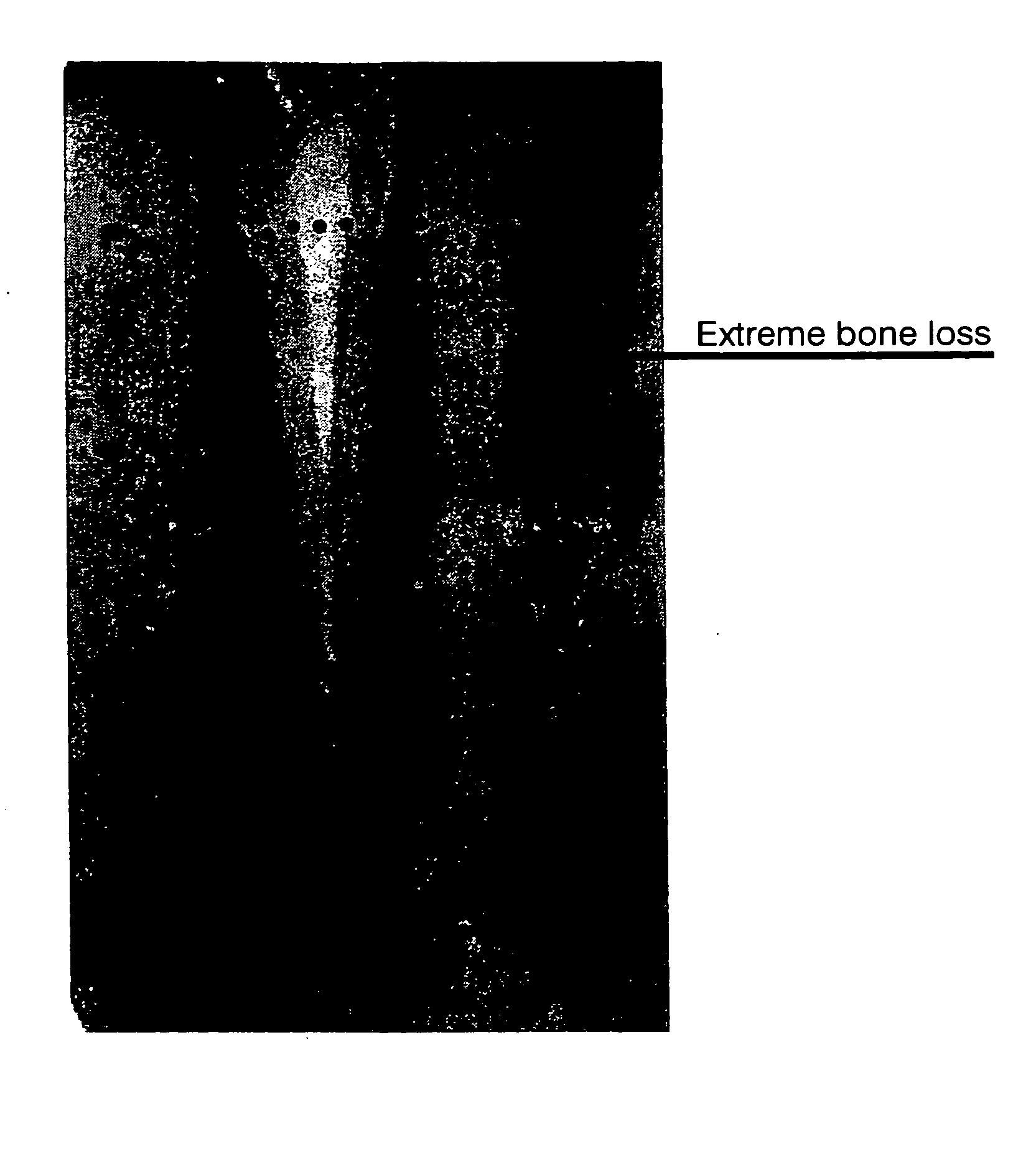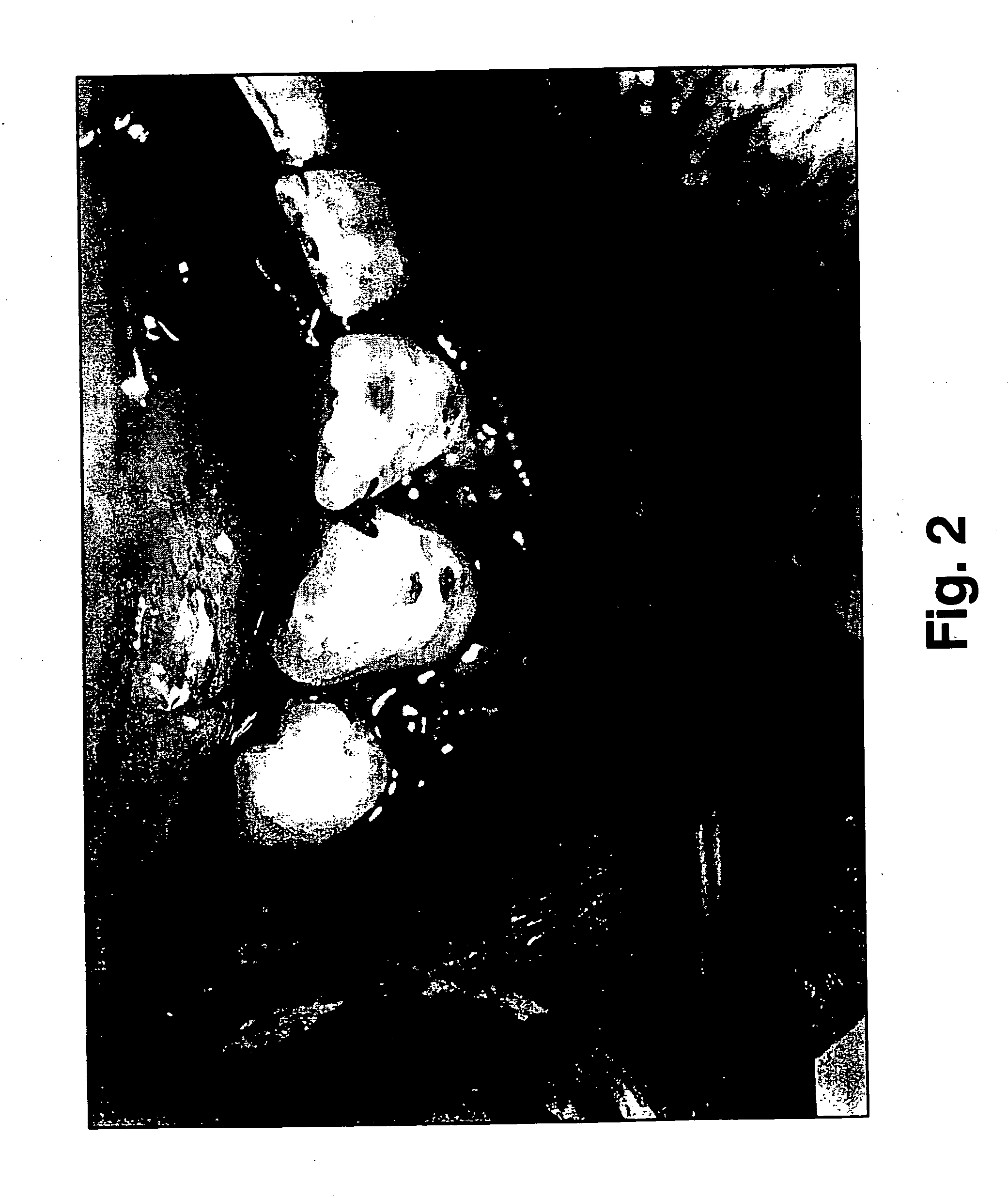Crosslinkable polymeric materials and their applications
a polymer material and crosslinking technology, applied in the field of materials, can solve the problems of bone loss, significant problem, dental implants cannot be installed immediately and placed in function, and achieve the effect of rapid loss of strength and susceptibility to water penetration
- Summary
- Abstract
- Description
- Claims
- Application Information
AI Technical Summary
Benefits of technology
Problems solved by technology
Method used
Image
Examples
first embodiment
Details of First Embodiment of Crosslinkable Prepolymer
[0064] As a first preferred embodiment, the crosslinkable prepolymer is one or more anhydride monomers or oligomers. Useful monomers or oligomers include anhydrides of a diacid or multifunctional acids and carboxylic acid molecules which include a crosslinkable group such as an unsaturated moiety.
[0065] Preferably, the crosslinkable prepolymer is linear with an unsaturated hydrocarbon moiety at each terminus and comprises a dianhydride of a dicarboxylic acid monomer or oligomer and a carboxylic acid molecule comprising an unsaturated moiety. More desirably, it comprises a methacrylic acid dianhydride of a monomer or oligomer of a diacid selected from the group consisting of sebacic acid and 1,3-bis(p-carboxyphenoxy)-alkane such as 1,3-bis(p-carboxyphenoxy)-propane.
[0066] Exemplary diacids or multifunctional acids include sebacic acid, 1,3-bis(p-carboxyphenoxy)-alkanes such as 1,3-bis(p-carboxyphenoxy)-propane (MCPP) or 1,3-bis...
second embodiment
Details of Second Embodiment of Crosslinkable Prepolymer
[0074] In the second embodiment, the crosslinkable prepolymer is a crosslinkable semi-IPN precursor.
[0075] The crosslinkable semi-IPN precursor comprises at least two components: the first component is a linear polymer, and the second component is one or more crosslinkable monomers or macromers. The crosslinkable semi-IPN precursor forms a semi-interpenetrating network (“semi-IPN”) when crosslinked. Semi-IPNs are defined as compositions that include two independent components, where one component is a crosslinked polymer and the other component is a non-crosslinked polymer. The crosslinkable semi-IPN precursor and the semi-IPN it forms are described in detail in U.S. Pat. No. 5,837,752 to Shastri et al., which is incorporated by reference in its entirety.
[0076] The first component of the crosslinkable semi-IPN precursor is a linear polymer. Preferably, the linear polymer in the first component is (i) a linear hydrophobic biod...
third embodiment
Details of Third Embodiment of Crosslinkable Prepolymer
[0087] The third embodiment of the crosslinkable prepolymer is disclosed in WO01 / 74411 (US designated), the specification of which is hereby incorporated by reference in its entirety. Specifically, it is a crosslinkable multifunctional prepolymer comprising at least two polymerizable terminal groups and having a viscosity such that the crosslinkable prepolymer is deformable at a temperature of 0° to 60° C. into a three-dimensional shape and being crosslinkable within the temperature range. Preferably, the crosslinkable prepolymer comprises a hydrophilic region, at least one biodegradable region and at least one polymerization region and has from 1 to about 100, more preferably from 1 to 20, most preferably 1 to 10, repeating units. The hydrophilic region preferably is a polyethylene glycol or a copolymer of ethylene oxide and an alkylene oxide with a degree of polymerization in the range of 2 to 500.
[0088] The crosslinkable pre...
PUM
| Property | Measurement | Unit |
|---|---|---|
| diameter | aaaaa | aaaaa |
| temperature | aaaaa | aaaaa |
| diameter | aaaaa | aaaaa |
Abstract
Description
Claims
Application Information
 Login to View More
Login to View More - R&D
- Intellectual Property
- Life Sciences
- Materials
- Tech Scout
- Unparalleled Data Quality
- Higher Quality Content
- 60% Fewer Hallucinations
Browse by: Latest US Patents, China's latest patents, Technical Efficacy Thesaurus, Application Domain, Technology Topic, Popular Technical Reports.
© 2025 PatSnap. All rights reserved.Legal|Privacy policy|Modern Slavery Act Transparency Statement|Sitemap|About US| Contact US: help@patsnap.com



